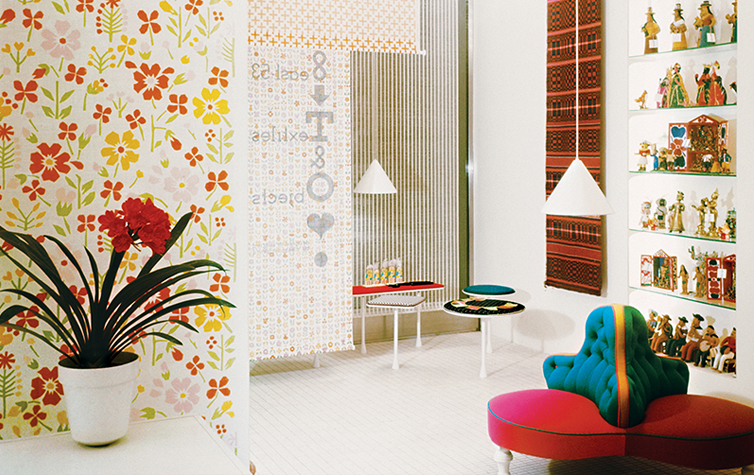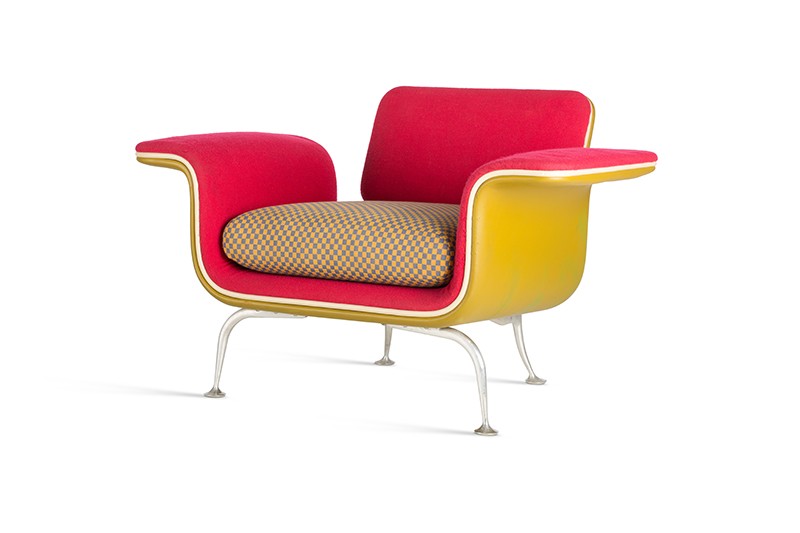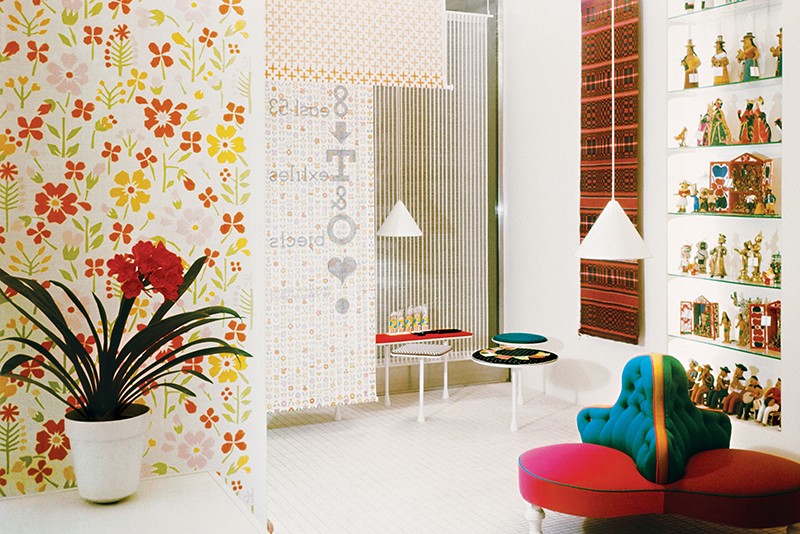
Alexander Girard (nicknamed “Sandro”) was born in New York City in 1907 and raised in Florence, Italy, by his American mother and Italian father. He trained at the Royal Institute of British Architects in London and the Royal School of Architecture in Rome. Girard moved to the United States in 1932 and opened his first design office in New York City. He later moved to Detroit, where he opened a second studio and, in 1949, designed the Detroit Institute of Art’s “For Modern Living” exhibit, which included the first public display of Charles and Ray Eames’ molded plywood chairs.
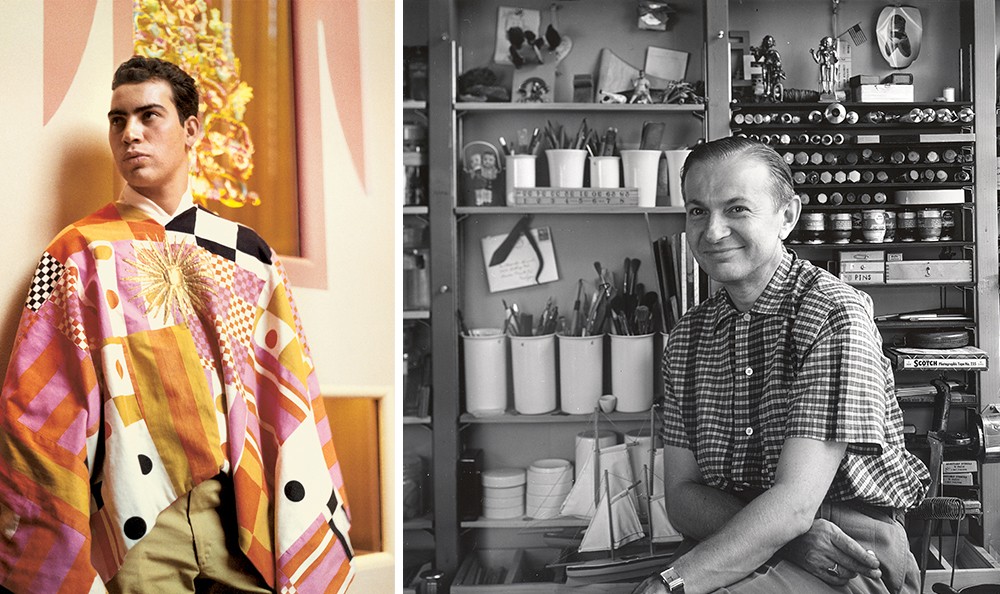
Girard also tackled large-scale projects. In 1959, he designed the interior, graphics, place settings and staff uniforms for La Fonda del Sol, a restaurant in New York City’s Time-Life Building. In 1965, he was hired to redesign every aspect of Braniff International Airways, a project consisting of more than 17,000 different items, with Girard updating everything from plane interiors and employee uniforms to stationery and condiment packages.
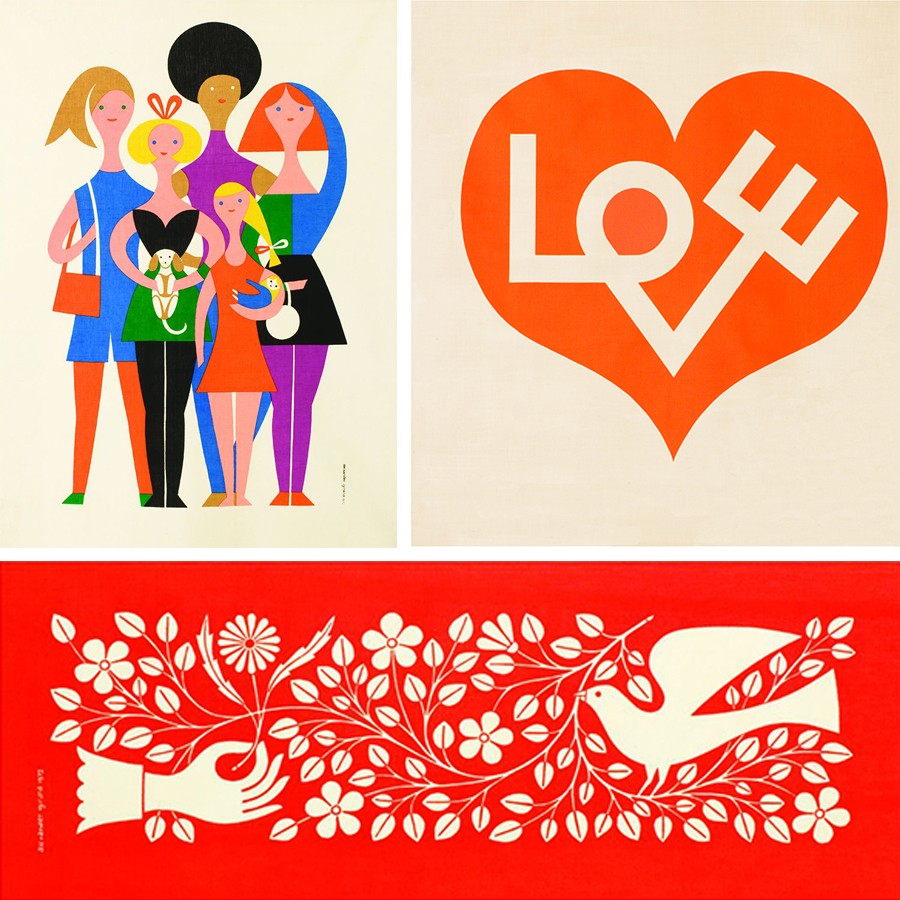
Girard amassed a collection of folk art that he and his wife donated to the Museum of International Folk Art in Santa Fe, New Mexico. Girard died in 1993 and, three years later, the Vitra Design Museum in Weil am Rhein, Germany took possession of his personal estate, which included drawings, photographs, sketches, textiles, furnishings and folk art objects. Select pieces from this collection, as well as pieces on loan from the Folk Art Museum in Santa Fe and the Girard family, are featured in the Vitra Design Museum’s exhibition “Alexander Girard. A Designer’s Universe,” on display through Jan. 2017. For more information on the exhibit, click here.

